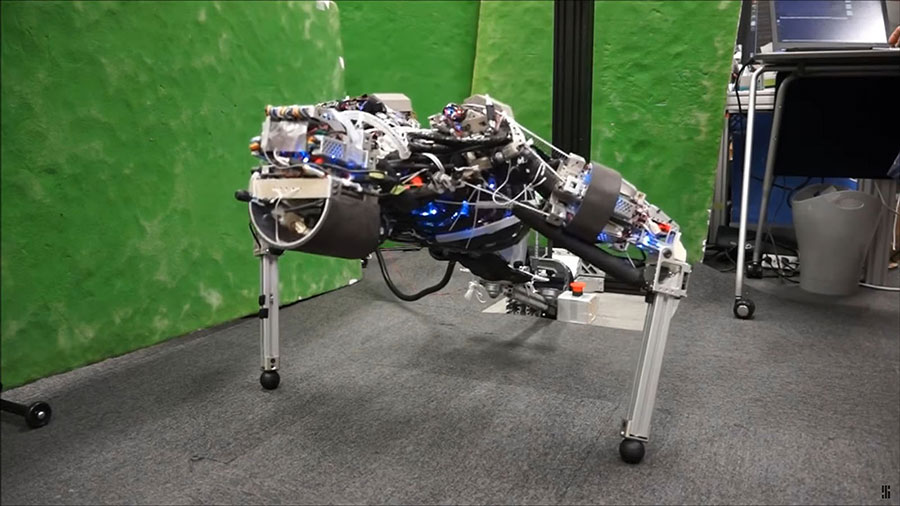Researchers at the University of Tokyo built a bio-inspired humanoid robot that can sweat to cool its over 100 motors. Named Kengoro, it has flexible and strong arms and has been designed to be physically active.
Like humans, its system generates a lot of heat when it is working hard, which could burn out its motors if it didn’t have the ability to sweat. Kengoro can to push-ups for 11 minutes straight and run for twelve hours without overheating. The sweat method is about three times more efficient than the ordinary air cooling, teams testing found.

Heat is a byproduct that limits the amount of time robots can be physically active before their systems become stressed and need to recharge. Sweat is a liquid secretion that humans evolved to help cool their bodies as it evaporates and researchers decided to study that behavior and apply the same mechanism to improve robotic performance.
The humanoid robot sweats water through its metal frame to keep cool. The team 3D-printed the solid aluminum frame, and this allowed them to vary the metal density. Water could seep through because the team made grooves in the metal much less dense. This method makes it possible for the porous metal to act like a sponge as it is filled with water, which goes to cool the robot’s components as it evaporates.
The robot’s sweat glands are positioned near motors, so they rapidly receive the water that moves through Kengoro’s channels, preventing overheating when the humanoid machine is working out.
While traditional active cooling is more effective thanks to a system comprised of radiators, tubes, and fans, the sweat method also works, and it takes far less space. The team was able to pack more circuits, sensors, and gears onto the robot than they would have been allowed it they had used traditional active cooling instead.
Other robots at the Tokyo lab
Designed for durability and strength, Kengoro is the sixth bio-inspired robot from the Tokyo laboratory. Research on previous humanoid machines has been focused on mimicking shoulders, knees, parts of the excretory system and other human structures. The team is currently engineering robots that assist the elderly.
An important field of research is Daily Household Assistance. The researchers believe this is a relevant practical application for this kind of robots. Because everyday household environments constantly change and several different objects are involved, the goal is to design humanoids that can perform a wide variety of tasks and expand the robots’ abilities in these life environments, according to the lab’s website.
Current research in this field aims to design and improve tool recognition and full-body motion planners. Researchers are focused on the development of waterproof robot gloves so they can easily clean, sweep and wash the dishes without taking any risk of damage.
Another fascinating field of research at the Tokyo lab is whole-body learning through leading. They have a humanoid robot that allows a person teach it through taking its hand and leading through a task such as washing the dishes, walking through an area or learning a posture. The goal is that robots develop the ability to acquire new behaviors by receiving guidance by any person at any given time. The researchers believe this is crucial for humanoids to become truly useful in everyday life.
The challenge is to develop robots’ ability to coordinate its responses and repeat behaviors taught by anyone through the arm guiding interface.
Source: The Verge
